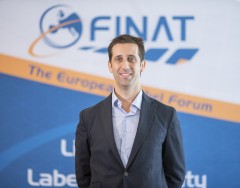Supply chain and sustainability, the challenges of the label industry
If we recap back to 2020, undoubtedly a lot of things have changed. We are talking not only about COVID's direct consequences, but also the indirect ones. And on top of that, many trends already existed, but the disease has promoted or speeded up the process.
Consumer behaviour has ondergone numerous changes. Some of them will stay, others will leave after some time. But those that will stay forever are the ones we have to take special care of and it is our obligation as iIndustry leaders to provide an appropriate answer. It is relevant how our industry has changed its role in the last years, moving from a relatively passive attitude to a much more active one, anticipating and acting accordingly.
Connecting with label users has become extremely relevant. The demand is irregular and less predictable and, at the same time, there is a need to better match this demand with the printing capacity. The latest FINAT RADAR #16 showed that 76% of brand owners are planning to buy more volume for 2022. We already demonstrated how flexible and fast adapters we were at the beginning of the pandemic.
The more demanding situation facing label converters will also request a more talented and specialized workforce, not only printers. In this respect, we will have to add an extra parameter: sustainability. The design of the product will not only take into consideration the graphic design, quality, service delivered, lead times, etc. Getting these new talented people into our industry is also a challenge we must face and FINAT is actively doing it through the #LABELicious initiative and other tasks.
Previously, we talked about matching the demand and the offer. The label Industry is being hit by a serious lack of self-adhesive material, we all know about this. After solving this big restriction we have, we should wonder what can we do to avoid or minimize this risk going forward. Can recycling or re-use be a partial solution to it? Why should we throw away material that could be brought back into our supply chain? Can this help make more material available even at a faster pace rather than going back upstream?
CELAB was born to answer the question of what our Industry can do with the matrix and release liner. We want to promote the recycling of those materials and provide a valid solution. The self-adhesive Industry has always been identified as a very flexible and proactive business and this topic is a challenge we must provide a solution to. CELAB is leading this challenge.
Look at this data from the latest FINAT Radar published last December:
- To the question of how important it is that label vendors have environmental certification, 93% of the responding customers said it is becoming more important or even vital. This is a huge increment from the previous FINAT Radar, which was 75%. On top of that, not a single company selected the response that having some type of participation is not important.
- What are their actual recycling practices? Only 10% of the respondents said they are not involved in a programme and have no plans. This means that 90% are already recycling some or all of the material. This shows the level of consciousness of label users.
But we must also be realistic and accept there is a huge task in front of us. And don´t think only from a technical point of view, also communication is something we have to improve. 28% of the label users asked didn´t know what happens to the liner. And how many of them know there is a specific programme to recycle the liner? One Director of labelling design and Compliance of a Global top 5 food and beverage conglomerate with headquarters in Europe said:
“If these companies do come up with an innovative solution, they’re often very quiet about it. I mean, anybody on LinkedIn just has to look me up and say, “Look, I have this new innovative product, I’d love for you to try it and see if there might be an opportunity there.”
And he added: “everyone from my sustainability teams, are looking for a story. We want solutions and our vendors saying to us – ‘Look, this is responsibly sourced’ or ‘This is made from recycled materials’ “
The opportunity is there, our Industry must grab it.






